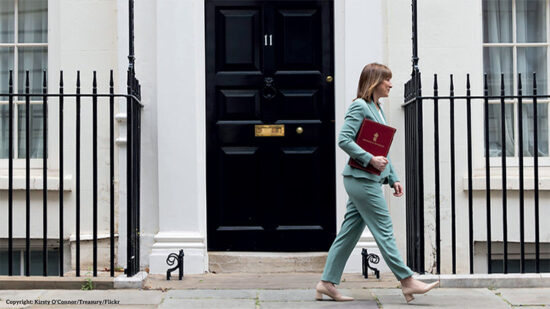Sterling
Bank of England Governor Mervyn King spoke last Thursday about the need for UK banks to raise more capital as he believed they were not as strong as they claim. He thought they may need up to £60 bn of fresh funds to help pay for their toxic loans as well as compensation payments for mis-sold PPI and LIBOR products. The report came in the half-yearly financial stability report by the Banks new financial policy committee which is set to monitor the health of the banking system.
While outlining in more detail where the shortfall could potentially come, he did add that the deficits were manageable and played down the prospect of another bailout. In all it painted a grim picture of the UK banking industry, and in his opinion it is one of the main reasons holding back the UK recovery, and needed to be tackled head on. While it had no influence on Sterling, it certainly shows that there is some way to go before the banking industry is back to a healthy condition, and is a drag on the economy.
Next week sees the monthly MPC meeting with no change expected in interest rates and no more additional QE. The Manufacturing, Construction and Service Purchasing Managers Indices will be closely watched, as will Industrial Production on Friday. However we do not feel that data will have too much impact on the currency and the main influence should again come from overseas.
With the US inching towards an agreement on the fiscal cliff, we feel the markets will be more willing to take on risk, so a higher sterling is likely this week, although we see lower levels versus the euro.
US dollar
There was a lot of data out last week and a lot of it was positive, but the dollar still lost ground as investors were more concerned with the upcoming ‘fiscal cliff’ negotiations. With a raft of spending cuts and tax rises due to come into effect in January it’s imperative that President Obama and the Republicans reach an agreement on how they can avert the potential 4% drop in growth if no compromise is reached. There were positive signs this week that the Republicans may be prepared to give ground on tax rises, but these things have a habit of going to the wire so investors are being cautious. If an agreement can be reached we could well see a fall in the dollar as investors look for more risky assets to invest in.
The data releases started with the volatile Durable Goods which saw demand for goods such as machinery and electronics climbed in October by the most in five months. The Richmond Manufacturing index advanced moderately in November following a slight pullback in October. New Homes Sales were disappointing with a downward revision to the previous month’s number although Pending Home Sales rose strongly but with mixed regional results. It looks like the recovery in Housing is still patchy.
It’s the first week of a new month and as usual there are a lot of economic releases including the all important Non Farm Payrolls on Friday. Estimates are for around a 91k increase a lot less than the previous month as the number may be impacted by hurricane Sandy. The various PMI data will give some clues on the economy, but realistically the fiscal cliff negotiations will take precedent. The signs are good that a compromise will be found, but these things have a habit of going to the wire so don’t be surprised if we are still talking about it in the last week of the year.
Look for a weaker dollar as investors look to take on more risk. GBP/USD should target $1.6092 and $1.6171.
Euro
The euro struggled early last week on concerns over the recent deal on Greek debt despite the release of the latest tranche of bail-out funds. The single currency had risen to a near one-month high above $1.30 versus the US dollar after euro zone finance ministers and the International Monetary Fund agreed to reduce Greece’s debt, paving the way for the release of Greece’s urgently needed aid loans. While the deal may have bought some more time for Greece, investors focused on the lack of details on a Greek bond buyback, which has to be carried out before the IMF can release its share of the aid tranche in December.
There was also concern about Athens’ ability to meet debt reduction targets to ensure release of cash instalments. Analysts said the Greek deal would provide only temporary relief as the worsening economic outlook for the euro zone, under relentless austerity measures, would keep the euro under pressure, especially against the dollar.
Despite the euro’s struggles versus the dollar, the GBP/EUR rate has fallen to a five-week low amid speculation European officials are making progress in stemming the region’s debt crisis, damping demand for the relative safety of the U.K. currency. Sterling headed for a fourth monthly decline versus the single currency as the German parliament approved the latest rescue package for Greece and a former European Central Bank Executive Board member said Spain may not need a bailout.
Legislators in Germany’s lower house of parliament, or Bundestag, this week voted 473 in favour of the Greek aid package, while 100 voted no and 11 abstained. German Finance Minister Wolfgang Schaeuble said crisis- fighting efforts were working as European leaders shepherded through a new package designed to ease terms for bailout aid for Greece and help resolve the three-year-old debt crisis.
There is a lot in the calendar for the euro this week, with PMI figures, GDP revision and retail sales all likely to give a reading on how bad the euro zone economy really is. If that were not enough, there are also 10 year debt auctions for Spain and France at which investors will have the chance to voice their opinion on the state of play. Finally, the ECB press conference will, as always, be closely scrutinised to gauge any change of policy direction.
Despite all the above, barring surprises, we expect GBP/EUR to continue to fall, potentially testing the October lows at €1.2265, although it is currently on a further support level at €1.2320 that may hold. Once this has happened, the rate should then push back towards €1.2500 as the current range persists.
The EUR/USD rate is making a meal of breaching $1.3000, but should achieve this provided risk appetite holds up. Nonetheless, further gains may be limited given the heavy data load next week and risk of ‘even-more-unpleasant-than-expected’ surprises.
New Zealand Dollar
The New Zealand dollar gained versus the pound through the middle of last week, but has since given back the ground, leaving it at the wrong end of its recent ranges. It fared a little better against its US counterpart after U.S. House Speaker John Boehner said he’s optimistic officials can “avert this [fiscal cliff] crisis sooner rather than later.” U.S. President Barack Obama assured company executives yesterday that he was ready to cut spending as he dispatched Treasury Secretary Timothy F. Geithner to meet with congressional leaders today amid negotiations to lower the nation’s budget deficit.
If lawmakers fail to reach agreement, more than $600 billion in automatic spending cuts and tax increases are set to begin Jan. 1. Cautious optimism from the key players in the negotiations, first House Speaker Boehner then President Obama, restored confidence to the jittery market, with commodity currencies seeing some of the better gains.
In domestic news, a private survey showed New Zealand business expectations for inflation fell to a 13-year low in November, adding to the case for benign price pressure that may prolong a period of record-low interest rates. Annual inflation will be 2.24% in a year, down from a 2.36% outlook in October and the lowest since October 1999, ANZ Bank New Zealand Ltd. said in a report this week. A separate report showed that NZ business confidence climbed last month on an improved global outlook.
The nation’s two-year overnight-index swap rate, an indication of what traders expect the Reserve Bank of New Zealand’s key interest rate will average during the period, was little changed on the week at 2.42%.
Although the RBNZ statement has the potential to change the outlook, the GBP/NZD rate has today failed to breach resistance at NZ$1.9590 and should now push lower towards NZ$1.9429 in the coming days – unless there is a fresh bout of risk aversion relating to Europe or the US fiscal cliff. Longer term, we favour a stronger pound.
Australian Dollar
It was a quiet week for the Aussie with little in the way of data to give direction to the currency. Events in Europe and the US were the main drivers but ranges were tight and liquidity was light. One of the few data releases of note saw New Homes Sales rise 3.4% in October, a modest rise but at least a move in the right direction.
The Aussie lost some ground towards the end of the week on speculation that the Reserve Bank will lower interest rates at next week meeting to shield the economy from a slowdown in mining. Australia’s statistics bureau said on Thursday that mining investment in 2012-2013 is projected at A$109.4 billion ($114 billion), compared with A$119 billion forecast three months earlier.
The decrease in the forecast will play a big part in the RBA decision making as mining represents a big part of the Australian economy so a number of economists are now looking for a 25bp cut to 3.0%. According to a Credit Suisse index, there is now an 83% chance of a cut in rates, up from 73% before the mining forecast was published.
The first week of a new month brings a lot of economic data as well as the RBA meeting. Investors will be looking closely at the GDP release on Tuesday as well as the Unemployment data to gauge the health of the economy. With the mining sector looking to ease, it will be interesting to see if there were improvements in other areas to compensate such as Construction and the Services sectors.
However we feel the biggest surprise could be if the RBA do not move on interest rates, so we feel a no change could prompt a move higher in the AUD, but a cut should be already priced in.
GBP/AUD may struggle above A$1.5400 with the bottom of the range at A$1.5276, but if there is to be a break out, it is likely to be as a result of surprises from the RBA meeting.
Canadian Dollar
With little in the way of significant domestic data flows last week, prior to Friday’s GDP number, the Canadian dollar traded in response to moves on the US dollar and the outlook for a resolution to the looming ‘fiscal cliff’. That said, Canada’s dollar declined versus most of its major counterparts as the deficit in the country’s current account, the broadest measure of trade, widened to the second-largest on record. The currency had approached a three-week high versus the U.S. dollar before erasing gains as exports fell faster than imports.
The nation’s current account deficit grew to C$18.9 billion in the third quarter, from C$18.4 billion in the previous three months, Statistics Canada reported. Economists had forecast a C$19.2 billion gap.
The shortfall has widened for four straight quarters, underlining the increasing global strains on the Canadian economy, where exports account for one-third of output. Exports of goods fell C$3.7 billion to C$112.7 billion, and imports fell C$2.5 billion from a record high to C$117.6 billion.
The appeal of Canada’s dollar was further dented by a report this lunch time showing that the country’s economic growth slowed more than forecast in the third quarter. Gross domestic product increased an annualized 0.6% from July through September, the slowest in more than a year and lower than the 0.8% median forecast. Statistics Canada today also cut its second- quarter figure to 1.7% from 1.9%.
This week will be an important one for the Canadian dollar, with the Bank of Canada interest rate statement along with domestic jobs data and the non-farm payrolls data from the US. GBP/CAD may well remain range bound with both struggling versus the greenback. Expect to see a test of $1.6000 at some stage though. USD/CAD may well retrace back above parity.
Chinese Yuan
The yuan touched new lows versus the US dollar today as confidence rose that China’s economy will fare better under the new leadership headed by Xi Jinping, completing its fourth consecutive monthly gain versus the greenback in the process. Respondents to the Bloomberg survey who see the Chinese economy improving or remaining stable surged to 72% this week from September’s 38% in the quarterly global poll of investors, analysts and traders. Fifty-three percent said they’re more optimistic about the effect of Xi’s policies on investors, up from 42 percent who were asked in September about President Hu Jintao.
The renewed faith in the Chinese economy reflects data from factory production to retail sales showing growth picking up this quarter after a seven-quarter slowdown. Almost half of respondents anticipate Xi’s government will pursue policies that boost expansion or keep it stable. Respondents expecting China to offer investors the best opportunities globally over the next year surged by 11 percentage points from September to 27%, a two-year high. That was second to the U.S., which was named by 40%. Nineteen percent of respondents said the new leadership will speed up market-based reforms such as the dismantling of state-owned enterprises. That compares with 6 percent who said changes will slow down, while 54 percent said the current pace will be maintained. Vice Premier Li Keqiang, set to succeed Wen Jiabao as premier in March, said last week that economic reform must be quickened, citing areas including improving state-owned companies and the taxation system.
This week’s data may not have much of an effect, but further gains on the USD/CNY rate cannot be ruled out given how long the intraday price has hovered near the low end of its permitted range, suggesting the market wants the yuan to strengthen.
Japanese Yen
The yen slid to a seven-month low versus the euro after data showed Japan’s consumer prices stagnated last month, fanning speculation the central bank will increase stimulus to spur inflation. The Japanese currency was set for its biggest monthly decline versus the euro since June as Shinzo Abe, leader of Japan’s main opposition Liberal Democratic Party, today called for all necessary measures to boost inflation to 2%. Abe looks likely to win the up-coming election and may then try for a dovish Bank of Japan governor. In the short term that looks priced in, but questions remain about the longer-term outlook.
Japan’s consumer prices excluding fresh food were unchanged in October from a year earlier after a 0.1% decline in September, the statistics bureau said in Tokyo today. The BOJ has an annual inflation target of 1 percent. Abe has called for the Bank of Japan to pump unlimited cash into the financial system and said today that monetary easing may include purchases of foreign bonds. Economy Minister Seiji Maehara said earlier that concern over Japan’s economy is increasing and that he wants to cooperate with the BOJ to end deflation.
The yen’s depreciation should continue this week with very few Japanese officials likely to be in the least concerned about it. The outlook for the economy is pretty bleak and with the apparent new government likely to press for more aggressive measures to end deflation, there is little reason to want to buy the currency right now. Only a big spike in risk aversion could turn the tide, and then probably only temporarily. Resistance on USD/JPY should come in at around 83.73. GBP/JPY may struggle around 133.00.
South African Rand
The rand made progress versus the pound last week, thanks largely to the euro’s gains rather than any significant strength of its own. Its cause was not helped however, by comments from South African Reserve Bank Governor Gill Marcus, who said that economic growth is likely to remain low.
Fourth-quarter growth is “likely to be very low,” Marcus told delegates of the National Union of Metalworkers of South Africa in Johannesburg yesterday. The central bank has room to cut borrowing costs, though it would be inappropriate to adjust rates at the moment, she said. The economy expanded 1.2% in the third quarter from the previous three months, according to Statistics South Africa this week, missing the 1.5% median estimate.
The rand also retreated after U.S. Senate Majority Leader Harry Reid said he was disappointed with the progress made in congressional budget talks over $607 billion in tax increases and spending cuts set to begin in January. Continued fears over the fiscal cliff more than offset any positives from the news of a deal on Greece or from the continuing positive U.S. economic data. Commodity prices are searching for direction amid heightened worries over the U.S. fiscal cliff and renewed fears about the global economic outlook and this is impacting on the appeal of the rand.
The rand had nonetheless, looked likely to end the week on a positive note as the markets encountered a new wave of risk appetite which supported emerging market assets in particular, but news of a record trade deficit at 21.2 billion scuppered the rand’s chances of a strong finish.
Following the trade deficit figures, the GBP/ZAR rate has pushed back towards R14.20. If momentum can be sustained this week, a test of recent highs around R14.35 can’t be ruled out. If not, further consolidation between R14.00 and R14.25 seems likely. Versus the dollar a break back above R8.90 is now on the cards, but further gains may be limited as the dollar stays weak on greater risk appetite.
For more currency data and information on how to assist your clients with their international money transfers, please visit the International Adviser Currency Zone powered by Moneycorp.








